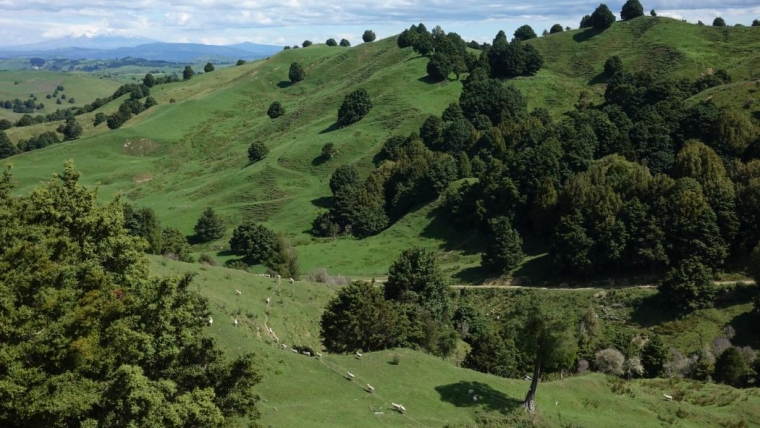
By Angus Kebbell
A recent study by David Norton from the University of Canterbury shows that sheep and beef farms contain almost a quarter of the total native vegetation remaining in New Zealand, comprising 2.8 million ha.
Half of the native vegetation that occurs on sheep and beef farms, or around 1.4 million ha, is woody which is old growth and regenerated forest. This represents 17% of the total native woody vegetation remaining in New Zealand.
Moreover, native woody vegetation on sheep and beef farms is particularly important because it typically occurs in those parts of New Zealand with the least remaining native woody vegetation and where there is proportionally less public conservation land, especially at lower altitudes and in drier regions.
Based on the results from this study, remnants of native vegetation, especially woody vegetation, on sheep and beef farms are critical for biodiversity conservation both on the farm and for landscape-level biodiversity outcomes. Remnants of native woody vegetation will benefit from stock exclusion and feral animal control and will regenerate towards a more mature condition if managed properly and farmers are already engaged in stock exclusion and the protection of these areas. More research is required to further understand the actual composition of native woody vegetation on sheep and beef farms, and the way that it has changed over recent decades.
Native vegetation sequesters carbon and farmers need to be rewarded for this. Norton says any credit for native vegetation should not be tradeable, but it should allow farmers to offset their own emissions.
The proposed National Policy Statement for Indigenous Biodiversity, is now controlled by Environment minister David Parker who used to be responsible for trade and export growth. Before launching into more regulation, he should consider how important farming is to New Zealand’s economy, and lower the pressure on farmers so they can keep improving and extending their native forest holdings.
Deeper engagement is required from The Beehive with farmers to ensure policies are realistic, workable, and achieve the best outcomes.
To get the full story listen to the podcast above.
Listen to the podcast for the full interview.
Angus Kebbell is the Producer at Tailwind Media. You can contact him here.
8 Comments
Norton says any credit for native vegetation should not be tradeable, but it should allow farmers to offset their own emissions.
Totally agree.
I'd go a step further and say at some point farmers should be paid annually for carbon storage on their property, in recompense for lost opportunity and providing a public good! Tradable credits are nonsense that only really provide income for those clipping the ticket.
Yes, it's called payment for ecosystem services - and it really should have been the global model regarding climate change mitigation and ecosystem services preservation from the very beginning.
The UN/IPCC development of a carbon market/tradable credits was a very suspect power play/idea - no real concern of the environment in it.
If there was an income stream generated from carbon storage it would become taxable. Far better to have an emissions offset credit - non tradeable and non taxable imv
It is exciting as farmer to see balanced researched articles representing NZ pastoral farming.
Thanks interest.co.nz and to your contributors.
In the area my family haves lived and will live for generations there are many who preserve at their own cost 1000s of acres of native forest.
What we find onerous is that we have now onerous compliance coming our way for something we’re doing as a public good.
David Parker’s over regulation & thinking is an anchor dragging on our wellbeing.
I love the King Country area. Most farms have areas of native on their property. Some have very large tracts. There is a Maori trust not far from us that planted a large area of totara years ago. Yet still farm around it. It looks wonderful. Come for a drive folks, check out the rather underrated King Country. Native bush around every corner. A slow drive and you will see lots of native birds. Kaka, kereru, the little black tomtit. The bush falcon. The long legged robin. If you are lucky on any road a wild pig will charge across. Or maybe a sow with piglets. Deer like ghosts slip off the road into the bush. Paddocks of fat lambs and woolly ewes. Beautiful beef cows and their pretty coloured calves. Take one of the back roads out to the west coast, and go catch a kahawai. I dont think people realise the jewel they have here just south of the Waikato.
It's funny isn't it, that David Parker is keen on protecting biodiversity on farms but he's the guy stopping general tree protections coming back in. So large natives can be felled anywhere in our cities with impunity right now.

We welcome your comments below. If you are not already registered, please register to comment.
Remember we welcome robust, respectful and insightful debate. We don't welcome abusive or defamatory comments and will de-register those repeatedly making such comments. Our current comment policy is here.